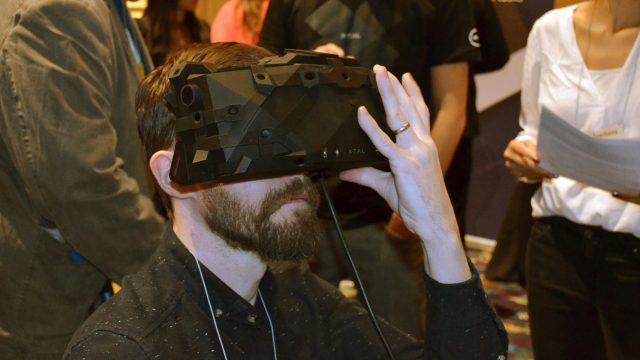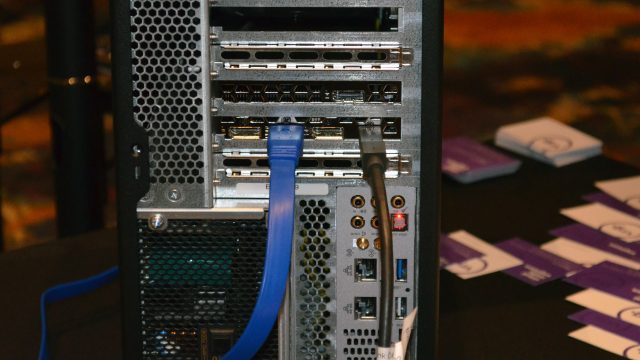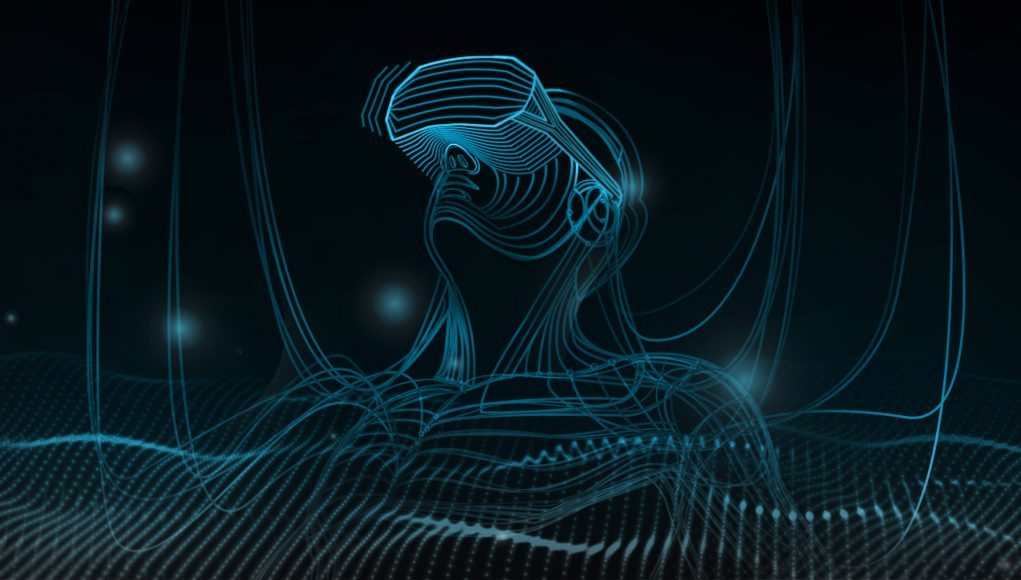VirtualLink was an open standard that defined a USB-C based connection protocol that was “developed to meet the connectivity requirements of current and next-generation VR headsets,” and backed by major VR industry players. The goal was to make a single, thin cable the norm for connecting VR headsets to PCs, instead of having multiple connectors (USB, video, and sometimes additional power) at the PC-end of the cable. Unfortunately the standard didn’t gain traction and appears to now be abandoned by the group that created it.
VirtualLink was announced back in 2018 with the backing of NVIDIA, AMD, Microsoft, Valve, Oculus, and HTC—representing a bulk of the most significant hardware players in the VR industry.
The standard would piggy-back off of USB-C as an “alternate mode” to offer four high-speed HBR3 DisplayPort lanes, a USB3.1 data channel for on-board cameras, and up to 27 watts of power. The standard was said to be “purpose-built for VR,” being optimized for latency and the needs of next-generation headsets.
At the outset, VirtualLink had seemingly strong momentum. All of NVIDIA’s latest desktop GPUs at the time, the RTX 20-series, were announced with an included USB-C port which supported VirtualLink. High-end headsets like StarVR and XTAL integrated VirtualLink to replace what would otherwise be four connectors (USB, power, and 2x video) into a single sleek cable that plugged directly into the GPU. Valve announced that it would sell a VirtualLink adapter for its Index headset which would slim down its three connectors to the single USB-C connector. But for some reason VirtualLink’s momentum faltered.
As far as we know, despite being part of the standard’s consortium of backers, AMD never added VirtualLink support to any its GPUs. The second wave of Nvidia’s RTX 20-series cards (the ‘Supers’) also dropped the USB-C port of the cards that preceded them. Valve cancelled the VirtualLink adapter for its Index headset, citing both reliability issues and saying that “VirtualLink technology has not been widely adopted by manufacturers, laptops in particular (where a single connection could be the most beneficial), translating to very few PCs having viable ports for the connection.”
This week—in a move that likely puts the final nail in the VirtualLink coffin—Nvidia announced its brand new 30-series GPUs, none of which appear to include the necessary USB-C port. What’s more, the official VirtualLink website appears to have begun redirecting to the VirtuaLink Wikipedia entry sometime around July.
Road to VR spoke to VRgineers, one of the only companies to actually build a headset with the VirtualLink standard.

I got to see their XTAL headset with VirtualLink connection earlier this year and it was really quite impressive to see an ultra high-resolution headset with two huge displays running entirely from a thin cable plugged into a single port in the back of a computer.

While the company has created an adapter to allow their XTAL headset to work with standard ports, it told us that “the [VirtualLink] consortium has not operated for quite some time now. […] But it is a shame because it is really reliable and convenient interface and communication protocol.”
Road to VR reached out to members of the VirtualLink consortium but hasn’t received a response.







